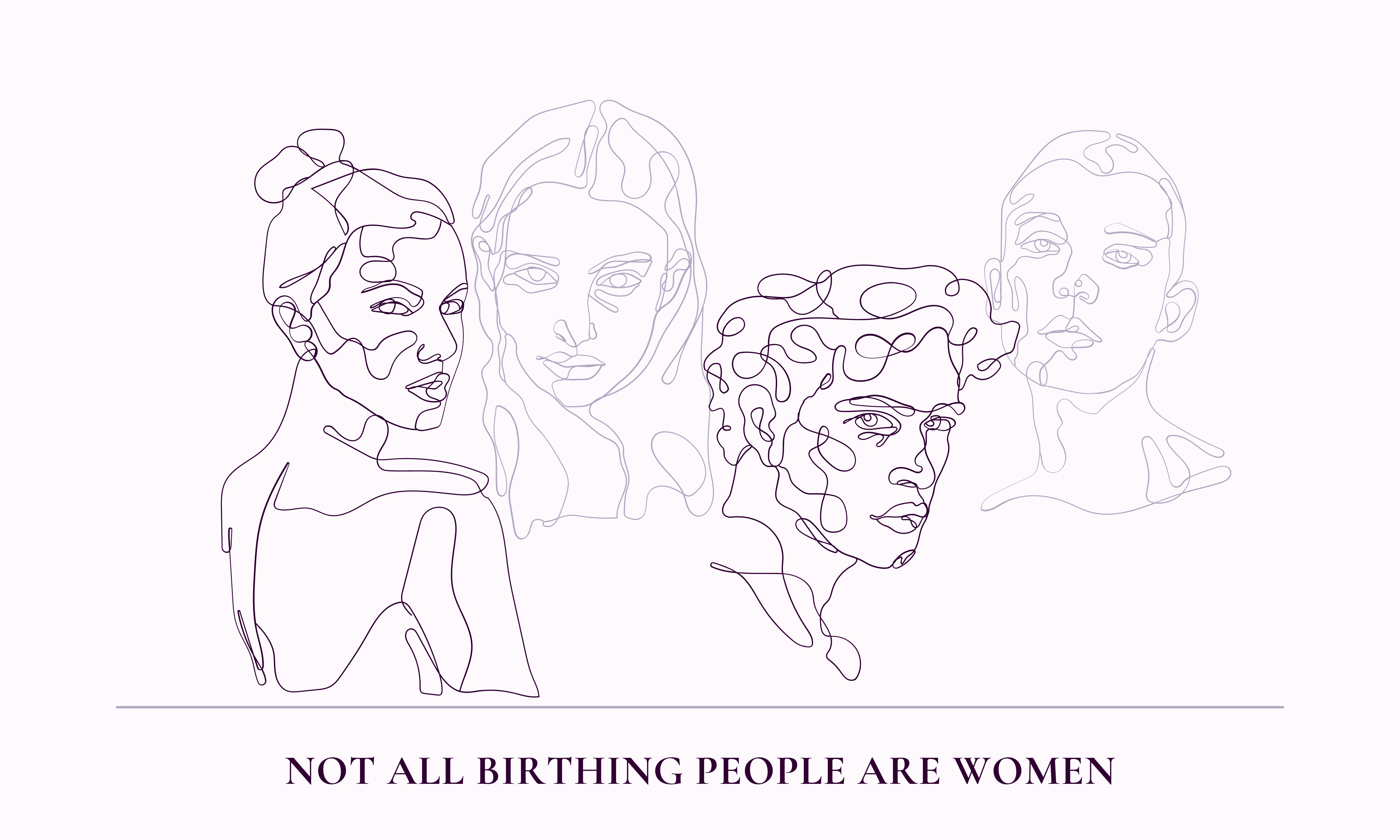[vc_row][vc_column][vc_column_text css=”.vc_custom_1626172064269{margin-bottom: 0px !important;}”]In Fall 2020, Doula Canada circulated a survey that was looking to hear specifically from members self-identified as belonging to equity-seeking groups such as, but not limited to, Indigenous, Black, racialized, immigrants or newcomers, LGBTQ2S+, and/or disabled peoples. We really wanted to hear directly from members about their experiences, learn from them, and listen for ways that they felt that we could do better. Something that came up repeatedly was the gaps in our curriculum materials that resulted in members feeling excluded – things like gendered language, white dominant images, only heteronormative references, limited or inappropriate cultural references, and more. We were feeling this too and it was powerful to hear it echoed back at us!
We certainly see that, historically, the primary narrative in education and training in the perinatal field (especially in Canada) centers and reflects persons and experiences characterized in the following ways: white (including white/light skin tones and hair that tends towards long, blonde/brown and straight/wavy), in a heterosexual and racially homogenous couple, able-bodied, thin, 30-something, with pregnancy intentional and resulting from sexual intercourse between a cisgender woman and man. This narrative has been applied to both doula clients and doulas themselves. It is seen in images, language, resources and references, and focus of discussions. This narrative leaves so many valued people and groups OUT.
In late 2020, we took deeper action to change this narrative in our own house by initiating the development of a robust Curriculum Checklist that is built around an intentional integration of an equity, diversity, and inclusion (EDI) lens in curriculum materials (oral and written). Yes, a checklist sounds like it could be ugh when it comes to EDI work – like a token action that gets people off the hook from doing any deeper, transformational work. We thought about that! Our Curriculum Checklist is for internal and external course developers and instructors who work with Doula Canada. It pushes them to reflect on how people who differ from the primary narrative are excluded and ignored, or, are mentioned and described in ways that present them as out of the ordinary. The Checklist means that dominant biases get reduced or removed from our curriculum through an intentional and guided change in language, images, references, and resources. The Checklist is also part of our Equity, Diversity and Inclusion (EDI) Action Plan (that we will officially launch soon).
We have just started to test out the Checklist in practice. We will watch the results and take action as required. We see it as a living document that will be continuously refined and improved. Right now, it largely focuses on sexual orientation, gender identity, race, and culture as areas where the dominant narrative is exclusionary. We have started adding more on intentional inclusion of Indigenous Peoples and disabled people.
Wondering what it looks like? Here are a few snippets![/vc_column_text][/vc_column][/vc_row][vc_row][vc_column][vc_single_image image=”377355″ img_size=”full”][/vc_column][/vc_row]

